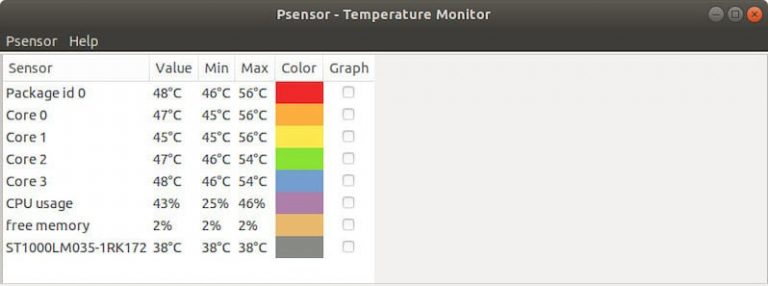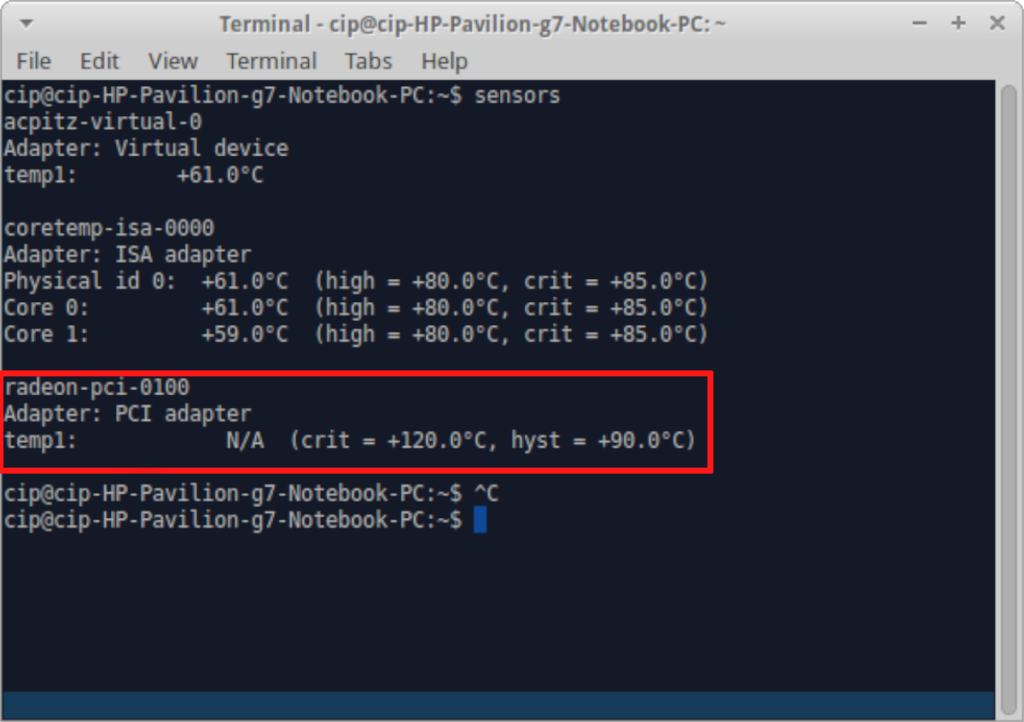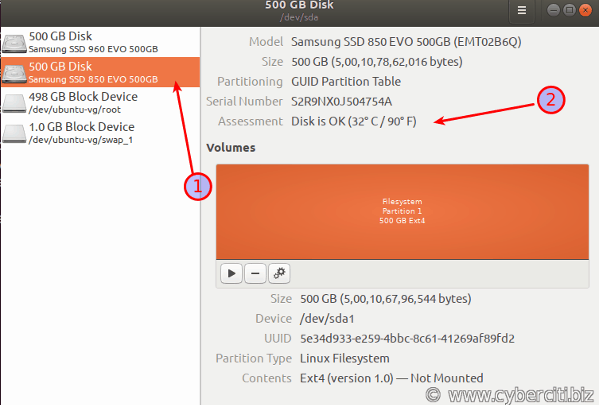

To enable this, click the menubar icon, followed by Sensor Preferences. Showing a temperature reading in the menubar Enabling one (or more) of the sensors to show their readings in the menubar for easy reference. The screen should sort of split out into two sections, with the left section exposing the graph. On my machine it seemed to have an issue with showing the graph section, somehow hiding it completely every now and then, so if that happens for you too, try dragging the list of sensors from the left-most side. sudo apt install lm-sensors hddtemp psensorĪfter installing these packages, launch psensors, it should show a list of all sensors it can find/access right away. These both provide temperature readings to psensor. I recommend you also install lm-sensors, and possibly hddtemp too if you need this. While there are probably other apps out there, this one seems to be fairly easy to use, and while its graph does not always seem to instantly update, it has a handy option where you can show the current temperature of your sensor of choice in the menubar. Fortunately there is a pretty easy app for that, that you can use regardless of what machine you're running Ubuntu on. Then run below to check the HDD or SSD temperature.After recently re-applying better thermal paste for the GPD Pocket 2, I wanted to also be able to keep an eye on system temperatures while running Ubuntu. To find out the disk identifiers, you can use fdisk. You need to know your disk identifier for this – for example /dev/sda or /dev/sdb, etc.

And the lm-sensors package gives you temperature details from the CPUs and other sensors accessed via PCI ports.Īfter installation, run the following from the terminal.

The hddtemp utility gives you the temperature of your optical hard disk drive as well as SSD (as per my test). Open a terminal in your Ubuntu-based system and install the following. We are going to use a couple of packages to achieve the same. Steps for monitoring CPU and HDD temperature on Ubuntu Using terminal However, modern Linux distributions are well capable of handling overheating situations via software sensors. Therefore, it is essential to monitor the temperature of the hardware. Because these thin ones are tightly coupled together inside, and no matter how much heat transfer mechanism is implemented, it heats up. But, if you are using very older hardware or a thin one, you may run into an overheating problem. You do not actually require checking CPU or HDD temperature if you are an average user. Wondering how you can check the CPU and HDD temperature in Ubuntu and other Linux on your desktop or laptop? Here’s a quick guide.


 0 kommentar(er)
0 kommentar(er)
